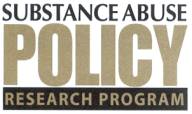 |
 |
Prabhu Ponkshe at 703-918-4930 EMBARGOED FOR RELEASE: November 14, 2002, 9:30 am Eastern EXPERT PANEL RECOMMENDS ZERO TOLERANCE LAWS fOR DRUGGED DRIVING Current Laws in Most States Inadequate to Identify and Treat Drugged Drivers Washington, DC, Nov. 14—A national survey indicates that in a 12-month period nearly 9 million Americans drove within two hours of using marijuana or cocaine, but current law in most U.S. states makes it difficult to identify, prosecute, or treat drugged drivers, according to a consensus report released today. “Driving under the influence of drugs, other than alcohol, has become a significant problem, but drugged drivers are not detected as often as drunk drivers. There is a lack of uniformity in the way state laws approach drugged driving, there are no national standards for testing drugged drivers, and too few police officers are trained to detect drivers who may be under the influence of drugs,” according to the lead author of the consensus report, Michael Walsh, Ph.D., of The Walsh Group. Walsh is a former executive director of the President’s Drug Advisory Council. Funded by The Robert Wood Johnson Foundation’s (RWJF) Substance Abuse Policy Research Program (SAPRP), the report reflects a consensus among national experts in substance use, traffic safety, auto insurance, and state and local law enforcement as well as representatives of advocacy groups, federal agencies, legal services, state and county attorneys, and research organizations. The consensus document was developed and written by Walsh on the basis of four national meetings of experts. Walsh and two other members of the consensus panel—Jerry Landau, Special Assistant Maricopa County Attorney in Phoenix, Arizona, and Linda Chezem, law professor at Purdue and Indiana universities and a senior judge of the Harrison Circuit and Juvenile Court in Corydon, Indiana—were at a media briefing in Washington, D.C., today. The laws affecting driving under the influence of drugs (DUID) fall into three main categories. Some states require that the drugs render a driver “incapable of safely operating a vehicle.” Other states require that the drug “impair” the driver’s ability to operate a vehicle safely or require the driver to be “under the influence or affected by an intoxicating drug.” A small group of states have “zero tolerance” or “per se” laws, which make it a criminal offense to have a drug or metabolite in the body while operating a motor vehicle. “The first two types of laws, which are in existence in 42 states, make it extremely difficult for the prosecutor to prove that the impairment of the driver was directly related to the drug ingested. The zero tolerance or per se laws, which are found in eight states [Arizona, Georgia, Illinois, Indiana, Iowa, Minnesota, Rhode Island, and Utah], simply make it a criminal offense to operate a vehicle while having a drug or a drug metabolite in one’s body or bodily fluids,” according to Landau. “In the case of driving under the influence of alcohol, there is a scientifically proven and defined relationship between alcohol consumed and impaired driving. The presence of alcohol at standardized limits, such as 0.08 blood alcohol concentration, while operating a vehicle, in itself is a violation of the law. That allows for the driver to be subject to legal sanctions, and, especially, to be referred to mandatory or voluntary alcohol treatment,” Landau said. Unlike alcohol, drug levels in the blood, urine, or saliva affect impairment depending on the dose, the way in which the drug was ingested, the pattern or frequency of use, and the metabolism of the user, according to Landau. “If we cannot identify the drugged driver, it is difficult for a judge or for a prosecutor to require that the driver go to substance abuse treatment, either voluntarily or through a court order,” according to Chezem. Chezem also said that defense lawyers and experts often argue that drugs act on specific areas, functions, or receptors in the brain, and the effect varies from person to person. Because DUID charges are difficult to prove, there is little or no incentive for police in most states to look for other drugs when alcohol is present, according to Chezem. “While national surveys relying on self-reported data indicate that drugged driving is common, I believe that these data underestimate how many Americans are actually driving under the influence of drugs, alone and in combination with alcohol,” Walsh said. The self-reported data come from the federal government’s National Household Survey on Drug Abuse, showing that more than 9 million Americans said they had driven a vehicle within two hours of consuming an illegal drug in the past 12 months. The consensus statement recommends that: · States should consider adopting zero tolerance or per se laws to identify drugged drivers and mandate evaluation and/or treatment for offenders. · The law should prohibit operation of a motor vehicle when any amount of drug is present in the body. · Refusing to be tested should be accompanied by sanctions, such as license suspension or revocation. · There is a definite role for drug treatment in per se laws, and statutes should include evaluation, counseling, and supervised treatment for those who violate the law. · Provisional licenses to permit the individual to drive to work and to a treatment center should be permitted. · Drug courts should have a definite role in mandatory treatment. · Police should be trained in drug detection technologies, pharmacology, and toxicology. · Laboratory methods, certification, and credentialing of toxicology experts should be standardized. SAPRP is a $54-million program that funds studies in policies related to alcohol, tobacco, and illicit drugs. The consensus statement is available at www.saprp.org. The Robert Wood Johnson Foundation (www.rwjf.org), based in Princeton, New Jersey, is the nation’s largest philanthropy devoted exclusively to health and health care. It concentrates its grant making in four goal areas: to assure that all Americans have access to basic health care at reasonable cost; to improve care and support for people with chronic health conditions; to promote healthy communities and lifestyles; and to reduce the personal, social, and economic harm caused by substance abuse—tobacco, alcohol, and illicit drugs. |
